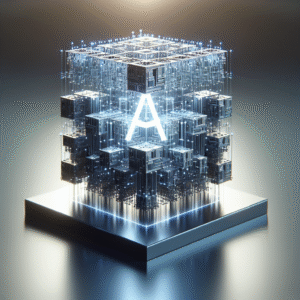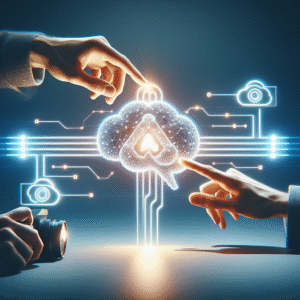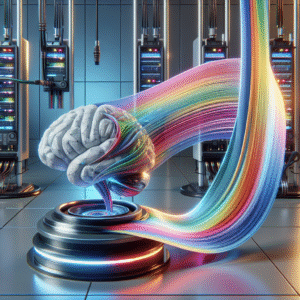When was the last time I texted someone and felt like I was talking to a real person, even though I was just typing into my phone? It’s incredible how technology has advanced, particularly with the evolution of Natural Language Processing (NLP). Let me share my thoughts on how NLP is reshaping communication as we know it.
Understanding Natural Language Processing
Natural Language Processing is a branch of artificial intelligence that focuses on the interaction between computers and human language. Essentially, it enables machines to understand, interpret, and respond to human speech and text in a meaningful way. This technology is behind everything, from voice assistants like Siri and Alexa to chatbots on customer service websites.
I find it fascinating that the algorithms behind NLP can process language the way I do, making it easier for me to communicate with technology.
The Evolution of Natural Language Processing
NLP isn’t a recent development; it has been evolving since the 1950s. Initially, it relied on simple rule-based systems, where I could see that language was processed through strict grammatical rules and dictionaries. However, as I’ve observed, the field has transformed dramatically with the advent of machine learning and deep learning.
Transition from Rule-Based to Machine Learning Models
With machine learning, the approach shifted from hard-coded rules to algorithms capable of learning from data patterns. This means that instead of being programmed with specific instructions, the models I interact with today can learn from the vast amounts of text data available on the internet. This shift has greatly enhanced how effectively NLP systems operate.
Notable Milestones in NLP
Here are a few milestones that I’ve come across in the journey of NLP:
| Year | Milestone |
|---|---|
| 1956 | The term “Natural Language Processing” is coined. |
| 1966 | ELIZA, one of the first chatbots, is developed. |
| 1997 | IBM’s Deep Blue defeats chess champion Garry Kasparov. |
| 2013 | Google’s word2vec model begins to enhance word representation. |
| 2018 | OpenAI introduces the GPT-2 language model. |
| 2020 | GPT-3 is released, demonstrating advanced conversational abilities. |
Each of these milestones has contributed to the dynamic landscape of NLP, showcasing how the technology has improved over the years.
The Role of NLP in Everyday Communication
I can’t help but notice how NLP has seamlessly integrated into my daily life. From my smartphone to my computer, its presence is unmistakable.
Chatbots and Customer Service
One of the most noticeable applications of NLP is in chatbots. When I visit websites for customer support, I appreciate how these tools can instantly respond to my queries. They help me find information quickly without the frustration of waiting on hold.
In fact, many companies employ chatbots powered by NLP to enhance their customer service experience. It’s not just about answering my questions; these bots can understand context, carry conversations, and even recognize my tone, making interactions more personal.
Voice Assistants
Voice assistants have transformed the way I perform everyday tasks. Whether I’m asking my smart speaker about the weather, setting reminders, or controlling my smart home devices, I rely heavily on that ability to converse easily with technology.
The NLP algorithms behind these assistants are designed to understand context, recognize my intent, and even adapt to my speech patterns over time. This interaction makes my life more convenient and efficient.
Social Media Monitoring
I’m also fascinated by how companies utilize NLP for social media monitoring. By analyzing vast amounts of posted content, they can gauge public sentiment about their brand or products. I often see brands responding promptly to negative reviews or feedback, showcasing their commitment to communication.
Language Translation
Being multilingual can be a challenge, but thanks to NLP, I can communicate with people from different linguistic backgrounds. Applications like Google Translate leverage NLP to convert my thoughts into other languages, allowing for smoother conversations across cultures.
I find this particularly beneficial when I’m traveling or connecting with friends from different countries. The technology has improved significantly, making translations more accurate and context-aware.
The Impact of NLP on Professional Communication
NLP is not solely a personal convenience; it has transformative effects in professional settings as well. Communication in the workplace has been redefined by these technological advancements.
Improved Documentation and Reporting
In my professional life, I find that NLP tools assist in generating reports, summarizing meetings, and drafting documents. These tools can analyze my input and provide coherent outputs, saving me time and ensuring clarity.
For example, I can quickly summarize long meetings, enabling me to send concise updates to my team efficiently.
Enhanced Collaboration Tools
Platforms like Slack and Microsoft Teams employ NLP for various functionalities such as smart replies and searchability. I often find it easier to locate past conversations or files, thanks to predictive text features that understand my queries.
These enhancements streamline collaboration, fostering seamless communication among my colleagues, regardless of physical distance.
Recruitment and HR
The hiring process has also been revolutionized by NLP. I’ve been involved in recruitment, and it’s eye-opening to see how NLP can sift through hundreds of resumes to identify the most suitable candidates. Automated screenings help streamline hiring, making it easier to find talent.
Moreover, NLP can analyze sentiment in interviews, offering insights into how candidates express themselves and fit within a company’s culture.
Challenges of NLP in Communication
While I appreciate the advancements brought on by NLP, I’m also aware of the challenges that accompany it.
Misinterpretations and Context Issues
One significant drawback of NLP is the potential for misinterpretation. I’ve encountered instances where chatbots misunderstand my intent due to sarcasm or idiomatic expressions. This can lead to frustrating situations where I feel like I’m not being understood properly.
Computers lack the human intuition I have, making it essential for humans to provide context or clarify when their technology fails to grasp subtleties.
Data Privacy Concerns
As I navigate various NLP applications, I often contemplate privacy issues associated with data usage. Companies collect vast amounts of personal information to train their models. I remain cautious about the information I share, knowing that it contributes to the technology enhancing user experience.
Bias in NLP Algorithms
Another concern is the potential bias in NLP algorithms. If I notice inaccuracies or skewed responses, it highlights how easily embedded biases can manifest within AI. For instance, if the training data reflects societal biases, the outputs may unintentionally perpetuate stereotypes.
It’s crucial for developers to address these issues, ensuring fairness and equality in the algorithms shaping communication.
The Future of NLP in Communication
Looking ahead, I find the future of NLP in communication promising, though not without challenges.
Integration with Other Technologies
As NLP continues to advance, I envision its integration with other emerging technologies like augmented reality (AR) and virtual reality (VR). Imagine being in a virtual meeting where an AI-driven translator instantly converts speech into my preferred language. Such innovations could redefine how I experience communication.
Personalization and Customization
With the advancements in machine learning, I can expect even greater personalization. As my preferences become more defined, technologies will adapt to my communication style, making interactions even more seamless.
Continued Ethical Considerations
As we advance, addressing ethical considerations will remain paramount. I believe that developers should prioritize transparency and accountability in their algorithms, ensuring that the technology evolves responsibly.
Conclusion
Reflecting on the impact of Natural Language Processing on communication, I can’t help but feel a mix of amazement and caution. This technology has transformed how I interact with the world around me, from simplifying my personal communication to revolutionizing professional environments.
The benefits are remarkable, but being mindful of the drawbacks is essential as I continue to navigate this ever-evolving landscape. As NLP evolves, I remain hopeful about the future, envisioning a world where communication becomes increasingly fluid, efficient, and inclusive.






